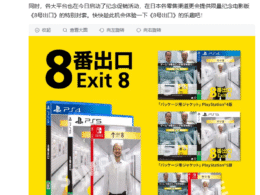The Rise of eSIM Technology: A Game Changer in Mobile Connectivity
Summary:
- Apple’s release of the iPhone Air has sparked significant interest in eSIM technology.
- Huawei’s upcoming Mate 80 series will also support eSIM capabilities, enhancing user experience.
- Huawei’s SkyTong GO mini program is set to launch its eSIM service, expected by Q3 2025, revolutionizing mobile network access.
September 14 marked a pivotal moment in mobile technology with the introduction of the iPhone Air, shifting the focus onto eSIM technology. As mobile connectivity continues to evolve, major players in the industry, including Apple and Huawei, are making significant strides in adopting eSIM capabilities that promise to enhance user experiences.
Huawei has recently unveiled that its flagship Mate 80 series, slated for release later this year, will support eSIM technology. This advancement suggests a growing trend towards adopting embedded SIM solutions in premium mobile devices, setting a new standard for connectivity and convenience.
Another exciting development is the forthcoming eSIM service from Huawei’s SkyTong GO mini program. The company has confirmed that this feature is currently under internal testing, with a public launch anticipated in the third quarter of 2025. This service aims to streamline and elevate the networking experience for users, further solidifying eSIM’s role in modern mobile technology.
However, it’s essential to note that once the eSIM service is operational, users will not be able to replace traditional SIM cards with eSIM capabilities for devices that do not support this technology. As of now, specific devices that will be compatible with the eSIM service have not yet been released.
eSIM, or embedded SIM technology, signifies a substantial advancement in mobile technology by allowing traditional SIM functionalities to be embedded directly into a device’s chip. This innovation eliminates the need for users to handle physical SIM cards, resulting in more efficient use of internal space within devices without sacrificing performance.
Industry expert Li Nan, founder of Numiao Technology and former executive at Meizu, has expressed optimism for this shift. He remarked that if the iPhone 17 Air successfully implements eSIM air issuance in China, it would mark a significant milestone in the industry’s evolution, thanking Apple for initiating such transformative changes.
The transition toward eSIM technology signals more than just a trend; it represents a fundamental shift in how users will engage with mobile networks. No longer bound by physical SIM cards, users can anticipate a more flexible, efficient, and user-friendly approach to mobile connectivity, aligning with the increasing demand for seamless digital experiences.
Conclusion
As we look to the future of mobile technology, the ongoing development and acceptance of eSIM technology highlights a commitment to innovation and improved user experiences. With major companies like Apple and Huawei leading the charge, we can expect a significant transformation in how we connect and communicate in the digital age.









